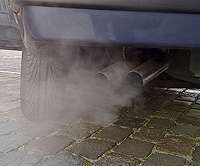Image by Eutrophication& hypoxia, Flickr
Researchers from the University of Bath are embarking on a new project to achieve a ground breaking 35 per cent reduction in car fuel usage that will decrease running costs and cut carbon emissions.
The team, from the University’s Powertrain & Vehicle Research Centre in the Department of Mechanical Engineering, has been awarded £590,000 from the Technology Strategy Board as part of a £4.2M consortium which includes Jaguar Land Rover, Lotus Engineering and Shell. The other consortium members are GE Precision, CD Adapco, the University of Leeds and Imperial College London.
The project aims to develop a petrol engine achieving the same performance as the current 5.0L V8 engine from an engine less than half the size, meaning that the engine runs more efficiently during everyday driving.
The highly ambitious three-year project will push many existing engine technologies beyond their current perceived operating boundaries. The resulting engine will have a higher specific torque rating than any production engine but with better fuel economy than current diesel engines and with the refinement, durability and emissions compliance of next generation petrol engines.
The principal investigator Dr Sam Akehurst said: “The experimental program will utilise a unique air-charging facility developed as part of my EPSRC Advanced Fellowship that is able to emulate the performance of advanced turbochargers and superchargers before they are available as physical prototypes.
“This will speed up the engine development process, allowing us to find the ultimate boundaries of engine operation under these extreme operating conditions.”
Professor Gary Hawley, Dean of the Faculty of Engineering & Design said: “This will be a very challenging project and we will be working with new industry partners. The delivery of a car engine that can demonstrate such fuel economy improvement will have significant impact in shaping future engine designs.”
The researchers anticipate the first demonstration engine will be built in 2011.
Provided by University of Bath




















